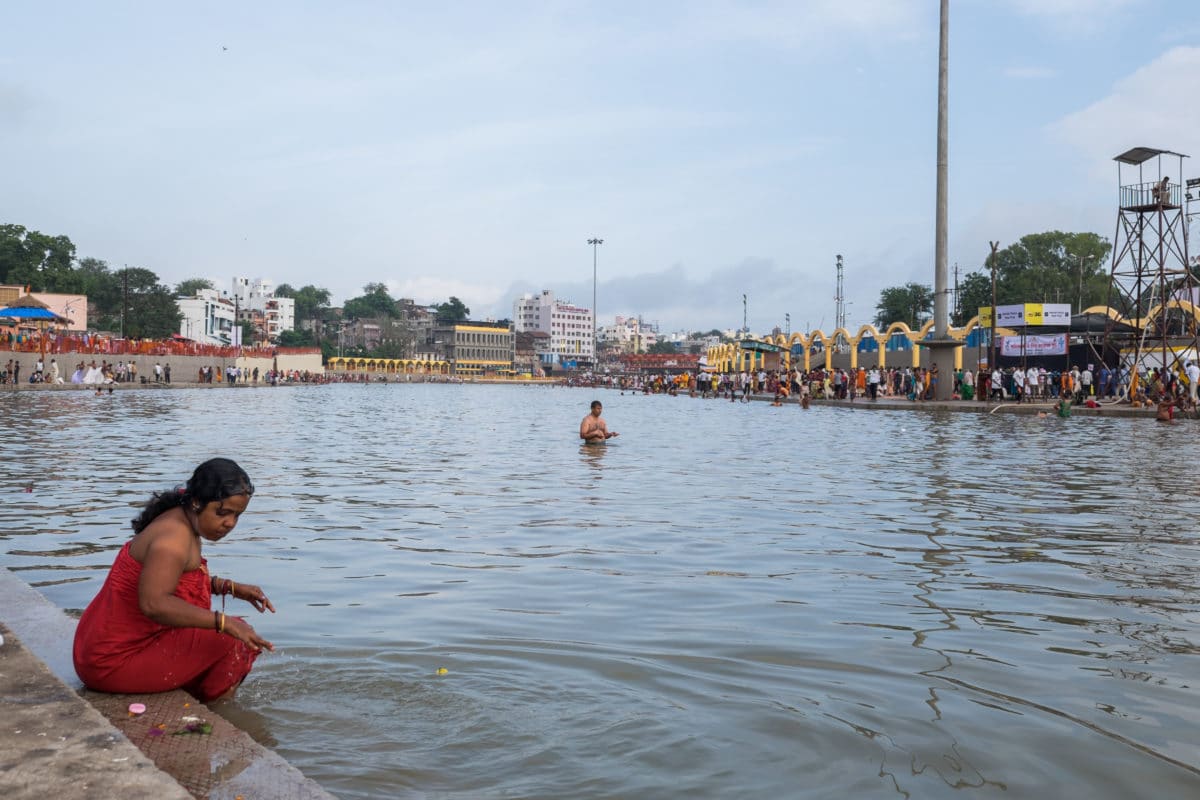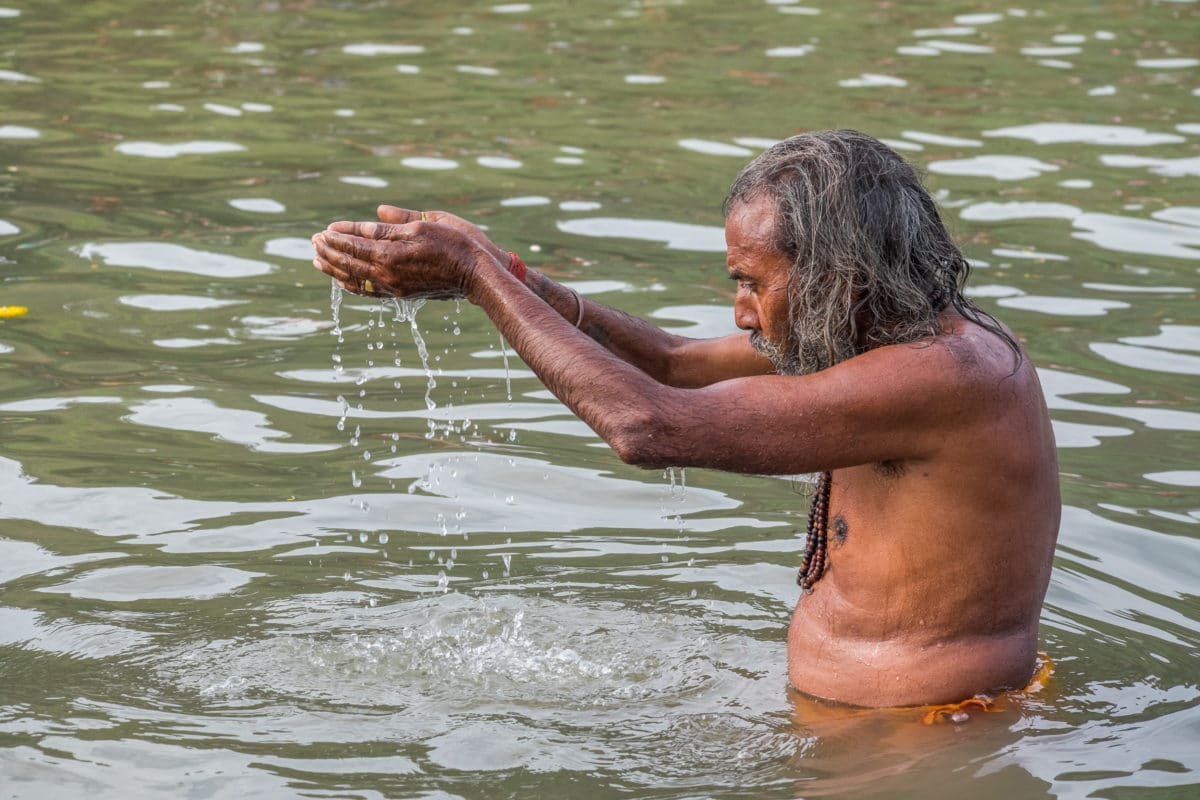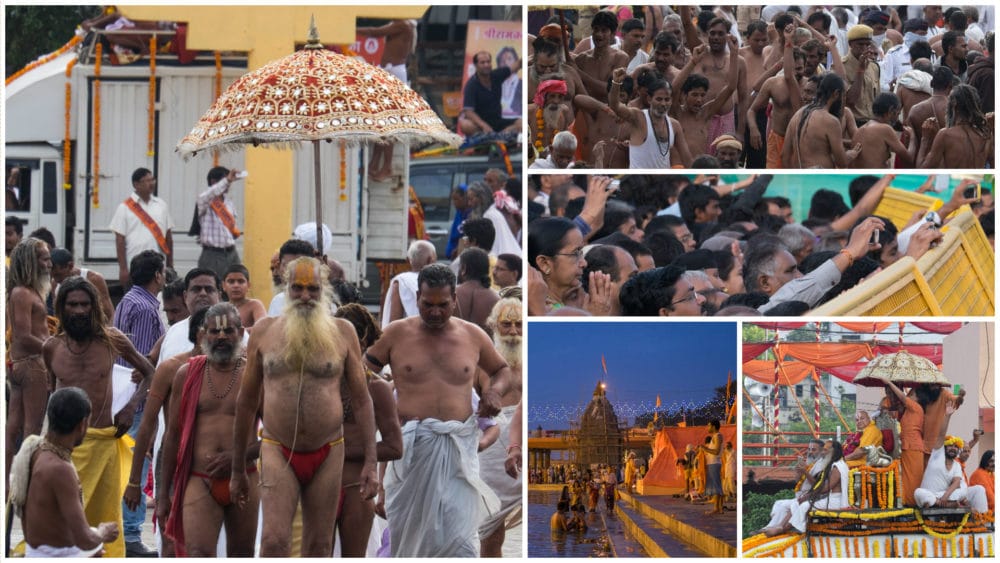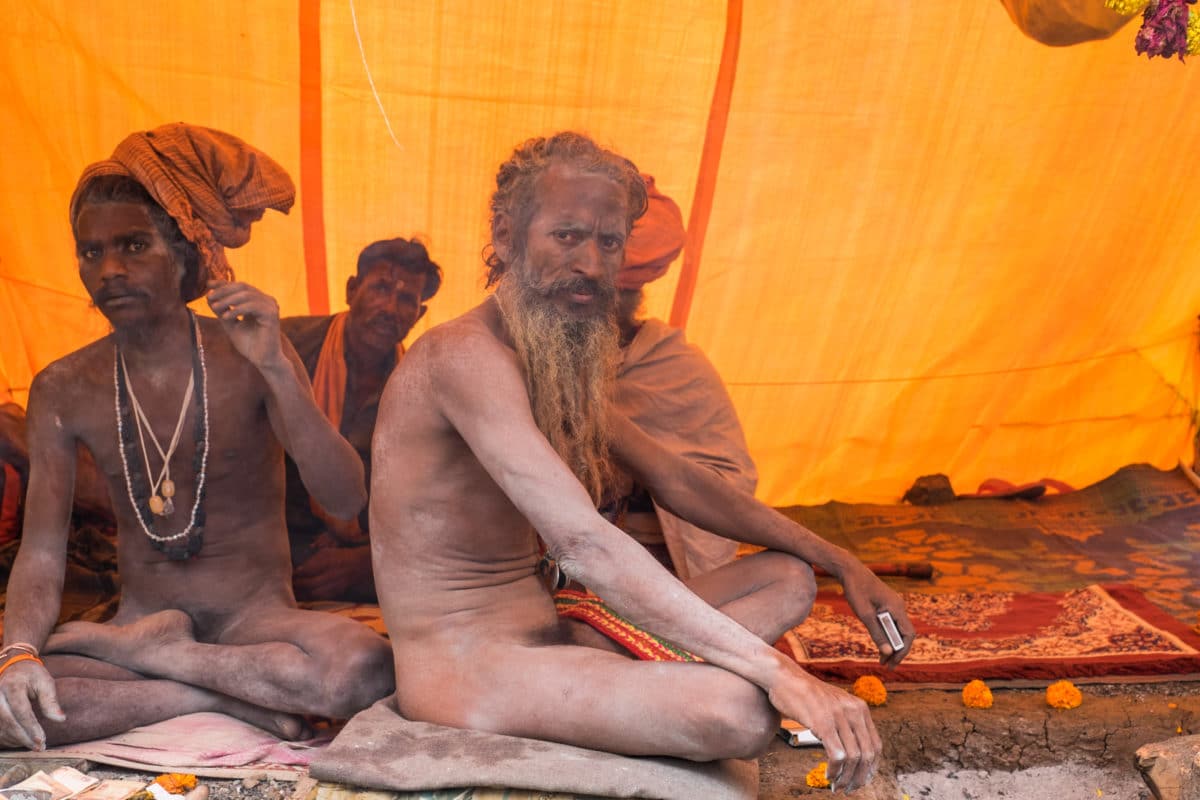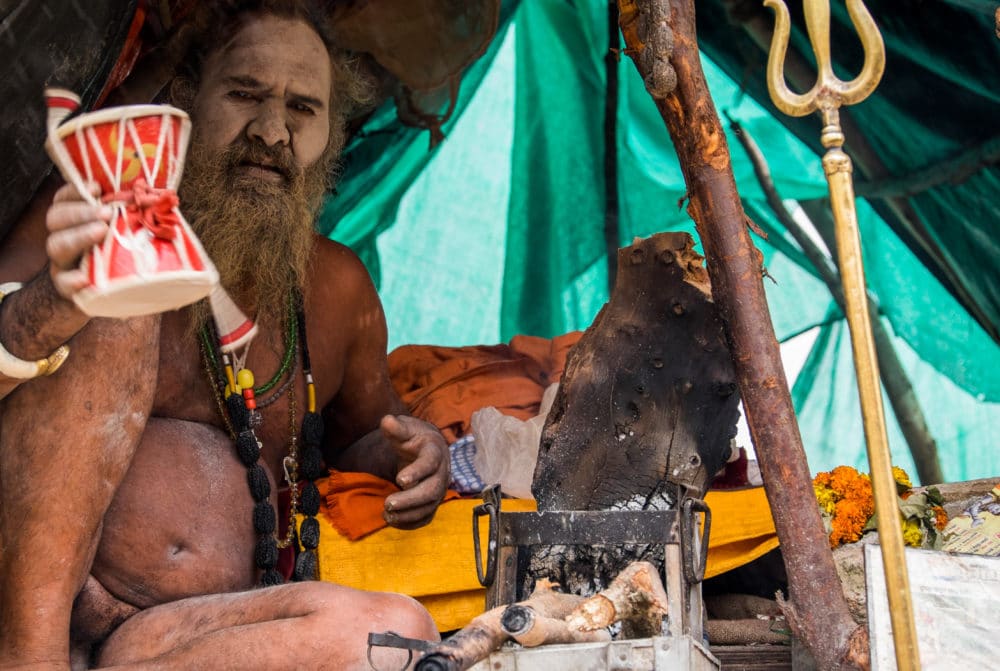One of the largest religious gatherings in the world, the Kumbh Mela is also the largest outdoor party for Sadhus or Hindu priests. Held every three years in 4 different locations across Northern India, the Kumbh is the Hindu version of Sunday confession. Every three years people gather, from all across the world, to pay homage to the men of god, as well as wash away their sins in the holy rivers. This year the Kumbh, was being held in Nashik, along the banks of the Godavari River. Apart from being a religious pilgrimage for millions, the Kumbh is also a haven for photographers. The proximity of Nashik to Bombay and Hoshner’s excitement at photographing the various interesting god men, found us in the car on Friday heading off to the hilly city of Nashik. The city is also home to pretty vistas, cool weather, and India’s wineries, so I wasn’t complaining. Since it was only a four- hour drive to Nashik, we hopped into our little blue car, packed with necessary stuff for the weekend, and left Bombay.
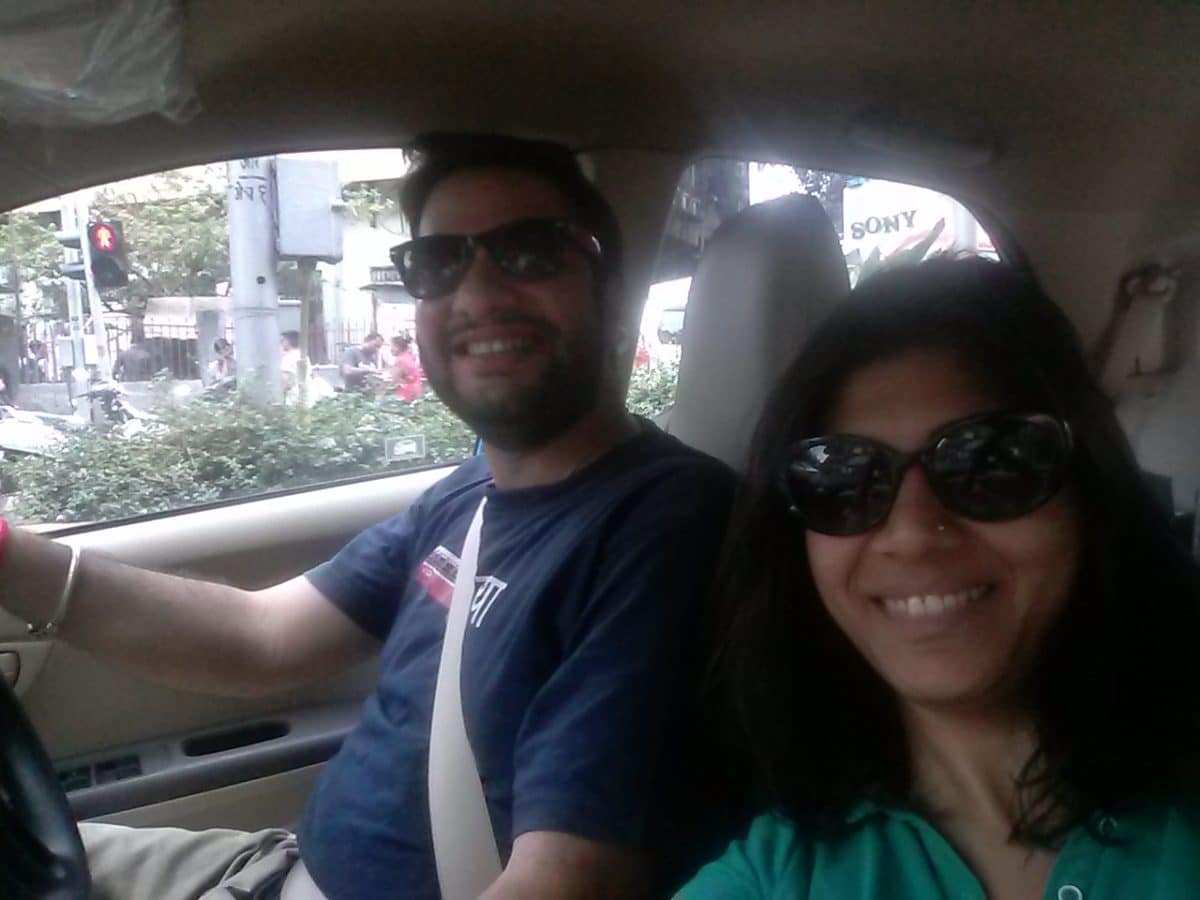
Day 1
We arrived late afternoon and checked into the very basic but clean and neat Ibis Hotel, which is on the outskirts of the main city. After several conversations with the hotel staff, with mixed and slightly dubious information, we hopped back into the car to check out the areas of the old city where the people would gather the next day for the festivities. For those who don’t know, there are designated areas or ‘ghats’ or bathing areas along the rivers, in each Kumbh city, named after various Hindu deities. With a bunch of information that was confusing at best, we decided to check out the ‘Ramghat’ bathing location. Named after Lord Ram it sounded the most promising for picture taking and people watching. As this was only meant to be a recce mission, we decided we would get to the ghat area, have a look, situate ourselves and figure out a plan for the next day, which was the main festival day. We were also told that the roads of the city would be closed to private cars and so we would need to measure distance and time in the event a lot of walking was required. While it sounded like a good plan in theory, it didn’t go quite as planned!
As we drove into the city, there were barricades being erected everywhere, with smart policemen (and women) every few metres. There were signs for the bathing areas, parking areas, walking areas, toilets, eating areas as well as emergency exit routes and clinics. It was all extremely well planned and laid out, and rather impressive. The closer we got to the ghats, the roads became narrower, the cops and pilgrims on foot increased in number and we decided to look for a parking spot. The very helpful police did not allow us to park on the roads and pointed us towards designated parking areas. However, being the good Indians that we are, we tried to avoid the designated parking areas as they were too far away, and sneak a spot on a side lane, only to be shoed away by a stern looking lady cop. By this time we had been driving for almost an hour, in circles, and decided to go back to the hotel and take an auto to the ghats. Probably something we should have done in the first place! We somehow managed to make it back to the hotel, driving through some lanes I am sure even the average local resident doesn’t know about, to avoid the barricades and found one of the many high priced autos we were going to use for the rest of the weekend.
Finally, almost two hours later, we found ourselves at the famous Ramghat. I am not sure I could in all honesty say it was worth the trouble, but it was certainly a sight to behold. Though the main festival was the next day, thousands were already gathering along the banks of the river, picking prime spots to get a glimpse of the priests and prayers that would begin in a few hours. After walking around and soaking in the reverence that was palpable, we too sat along the banks of the river, surrounded by deeply religious and pious men and women. All around us we heard people speaking various Indian languages, communicating through Sanskrit and the old art of prayer, bound by a collective faith and belief and the power of religion.
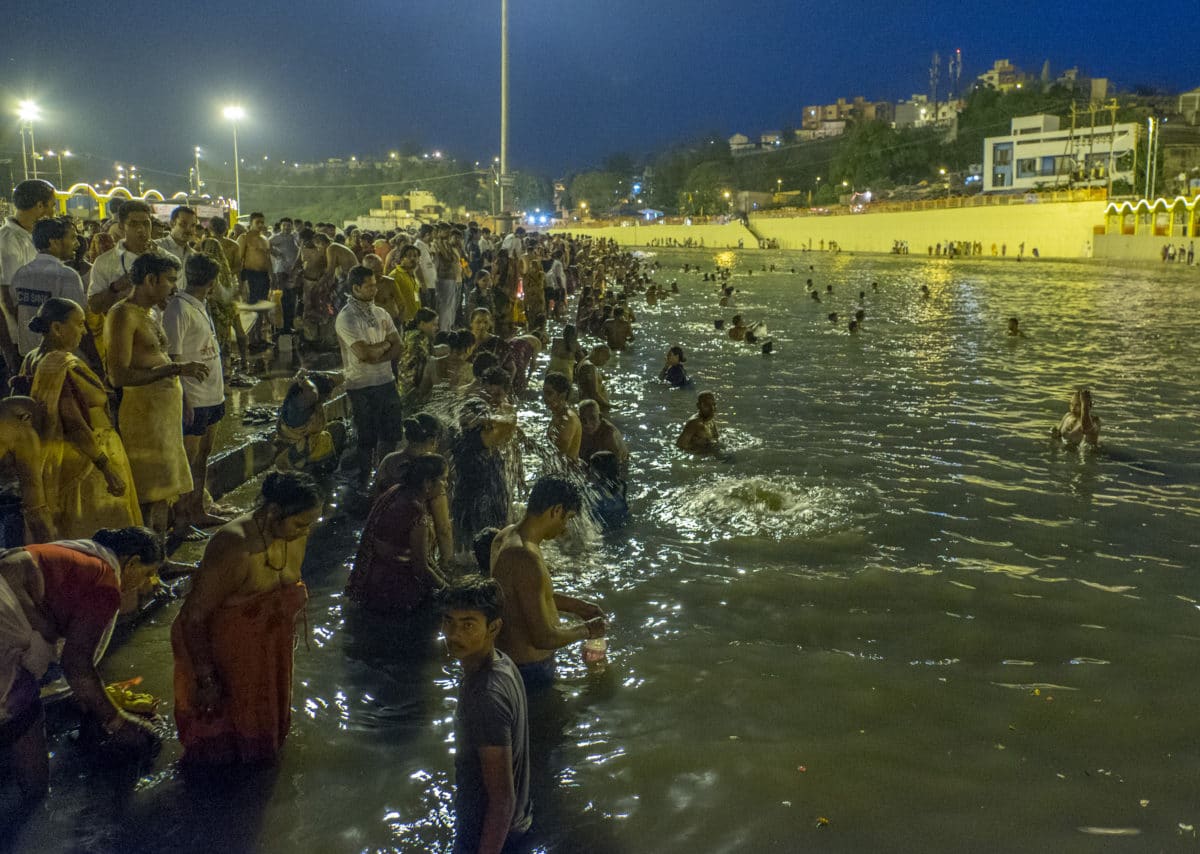
Day 2
Legend has it that the during the times yore the Devas (gods) who had lost their strength due to a curse formed an alliance with the Asuras (anti-god) to churn the ocean of milk for Amrut, the nectar of immortality and regain their powers. As with all such tenuous alliances, when the Kumbha, the magical urn which held the elixir, finally appeared after a 1000 years of churning, the two sides fought over the spoils for 12 days and 12 nights (12 long years in human time)! Ultimately as the Devas fled with the holy urn, four drops of the nectar fell to earth forming holy pools in four places – Haridwar, Allahabad, Ujjain and Nashik. Thus the Kumbhmela is held in each of these four locations every 12 years, on the banks of the Ganga in Haridwar, the confluence of the Ganga, Yamuna and mythical Saraswati in Allahabad, the Kshipra in Ujjain and the Godavari in Nashik. It is believed when the stars are correctly aligned; a dip in the holy pools will wash away your sins and hopefully free your spirit from the cycle of rebirth.
Thus early the next morning, we joined hundreds of thousands of pilgrims who had walked kilometres to reach the banks of the Godavari for the first ‘Shahi Snan’ or royal bathing day of the Kumbh. For one who has grown up in the city of Mumbai and associates crowds with chaos and noise, it was a fairly strange experience walking on the dark streets of Nashik at 4 am, with thousands of people towards the ‘Ramghat’ in near reverential silence.
After an hour of walking we finally reached ‘Ramghat’ and the scene there was surreal. Any disappointment we had felt the previous day immediately dissipated. In the predawn darkness you could see people of all ages, entire families, the old and infirm, the businessmen and rickshaw drivers, couples with toddlers and babies in arms, holy men and beggars, lining up along the ghats for a chance to immerse themselves in the chilly waters, and wash away their sins.
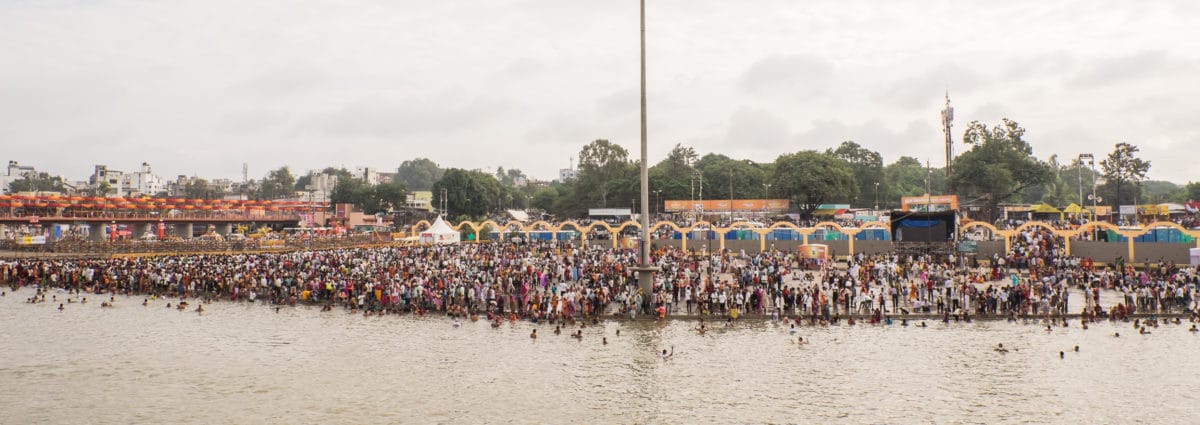
Whilst the ‘commoners’ can bathe in most parts along the river, some areas are cordoned off for the stars of the show. The saddhus and the babas who have travelled from all corners of the nation, many on foot, are awarded the privilege of the first dip at Ramkund the most holy of all the bathing ghats on the Godavari. At 7 am sharp the procession of saddhus, lead by the Nagas, descend into Ramkund to loud cheers and roars of approval. Some walked on foot waving swords and trishuls (tridents), and some were brought in on thrones mounted atop makeshift chariots, waving to the crowds of thronging devotees. This was the moment the swelling crowd had been waiting for, a chance to pay homage to the seers, whose blessing and curses can change the course of one’s life. The excitement was palpable, both amongst the crowds and the sadhus, as the first along the banks rushed with loud cries into the waters of salvation.
Day 3
The excellent arrangements by the Nashik Kumbh organisers and thousands of devotees ensured that while we could see the famous Naga babas we couldn’t get close enough for any real interaction. Exhausted after the morning activities we decided to go in search of them the next day, Sunday. Again, after deciphering the confusing information given by our high priced auto friend and the hotel staff and various police on the road, we drove about a half hour outside the city to the ground where they were camping.
Worshippers of Lord Shiva, the Nag Babas or Nagas as they are popularly known, were once entrusted with defending the essence of Hinduism. In an age before time, they were a secret society well versed in the art of intellectual and physical war. They are known to live in caves, forests, graveyards and the cold mountains of the Himalayas, appearing only during the Kumbh festival. While there are many stories and legends that surround this relatively small sect of people, what one knows is that they continue to worship Lord Shiva, enjoy a good pipe of marijuana, and spend their lives stark naked covered only in the ash from fires that are constantly kept alive.
After an eventful car journey, evading police barricades and roadblocks, we found ourselves at the Trimbakeshwar temple. Nestled in a small valley, the temple is dedicated to Lord Shiva, with scores of Naga babas chilling in their makeshift tents around the temple grounds. Most of them had small wood fires in their tents and busied themselves with their chillums as they nursed their prayer fires. One very enterprising baba, wearing nothing but sunglasses, offered, with a sly smile, not to haunt us in our dreams, if we spent some time in his tent and helped him with some charas from Bombay. Walking around and chatting with them we met babas who were from the deserts of Rajasthan and forests of southern India, some from the Himalayas and even one who claimed to live in a cemetery. He, a young Naga baba, was teaching an even younger sadhu, some verses in sanskrit, all the while sucking on the chillum being passed around amongst the babas in the tent. Whatever one might think of this sect of holy men, a certain amount of respect and awe must be accorded to the men who live, cut off from society, in a world of their own creation.
